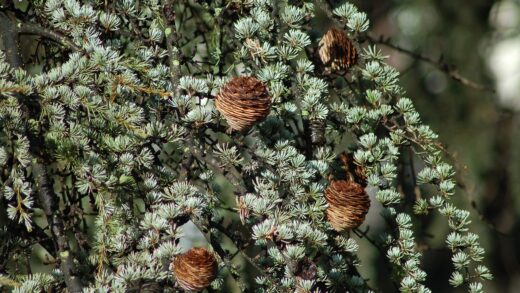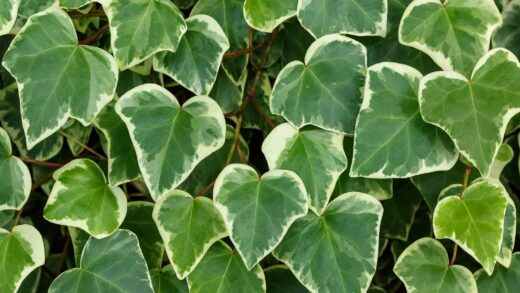The light requirement of the Atlas cedar is a simple yet absolute mandate: it demands full sun. This fundamental need is written into its genetic code, a legacy of its native habitat on the sun-drenched slopes of the Atlas Mountains. To achieve its characteristic majestic form, dense foliage, and vibrant needle coloration, the tree must receive at least six to eight hours of direct, unfiltered sunlight every day. Providing anything less is a compromise that will invariably lead to a decline in the tree’s health and aesthetic appeal, underscoring that for this species, ample sunlight is not just a preference, but an essential ingredient for life.
When an Atlas cedar is deprived of sufficient sunlight, the consequences become visually apparent over time. The most noticeable effect is a significant reduction in the density of its foliage. The branches will appear sparse and thin, with needles spaced further apart, creating a weak and etiolated look. The tree will lose its full, robust silhouette and instead take on a lanky, open, and generally unhealthy appearance. This is the tree’s direct response to a lack of light energy, as it cannot support a dense canopy without adequate fuel from photosynthesis.
The color of the needles is also directly impacted by the amount of sunlight the tree receives. The various cultivars of Atlas cedar are prized for their stunning foliage, which ranges from a deep green to a striking silvery-blue. These vibrant colors are most intensely expressed when the tree is grown in full sun. In a shaded location, the production of the pigments responsible for these brilliant hues is diminished. A ‘Glauca’ or blue Atlas cedar, for instance, will appear a duller, more washed-out gray-green when sited in partial shade, losing the iconic feature for which it is most admired.
Furthermore, a lack of direct sun makes the tree structurally weaker and more susceptible to a range of secondary problems. In an effort to reach for more light, branches may become unnaturally elongated and weak, making them more prone to breaking under the weight of snow or in high winds. The reduced vigor and sparse canopy also create a more favorable environment for certain pests and fungal diseases, which often thrive in the shadier, more humid conditions and on a host plant that lacks the energy to mount a strong defense. The importance of full sun is therefore tied not just to aesthetics, but to the tree’s fundamental structural integrity and health.
The impact of full sun exposure
Full sun exposure is the engine that drives the growth and vitality of the Atlas cedar. The intense energy provided by direct sunlight fuels the process of photosynthesis, allowing the tree to convert light, water, and carbon dioxide into the sugars it needs for energy and growth. This abundant energy production is what enables the tree to develop a dense, multi-layered canopy of needles, build strong woody tissues, and create the stored reserves necessary to withstand periods of stress and to fend off pests and diseases.
More articles on this topic
One of the most significant benefits of full sun is the promotion of a strong and symmetrical growth habit. When light is received evenly from all sides, the tree tends to grow in a balanced, conical, or pyramidal shape, with a dominant central leader and well-spaced horizontal branches. This natural form is not only aesthetically pleasing but also structurally sound. In contrast, a tree that receives most of its light from one direction will exhibit phototropism, growing unevenly towards the light source, which can result in a lopsided and structurally compromised form.
Sunlight also plays a crucial role in the tree’s health by helping to keep the foliage dry. The heat and light from the sun quickly evaporate dew and rainwater from the needles, reducing the amount of time the foliage remains wet. This is a critical factor in preventing the germination and spread of fungal disease spores, such as those that cause tip blight. A tree in a shady, damp location with poor air circulation is at a much higher risk of developing fungal problems than one that is bathed in sunlight for most of the day.
It is important to note that while “full sun” is the requirement, young, newly transplanted trees can sometimes experience stress from intense afternoon sun, particularly in very hot climates. This is primarily a water-related issue, as the undeveloped root system may struggle to keep up with the moisture demands of the foliage. During the first year of establishment, ensuring the tree is well-watered is the key to helping it handle the full sun exposure it needs. Once established, its inherent drought tolerance allows it to thrive in the sunniest and hottest parts of the landscape.
Consequences of inadequate light
Placing an Atlas cedar in a location with inadequate light is one of the most common and damaging mistakes a gardener can make. A site with less than six hours of direct sun will initiate a slow but steady decline in the tree’s health. The most immediate and visible consequence is the thinning of the canopy. The tree will begin to shed its inner needles at an accelerated rate, as it cannot afford the energy to maintain foliage that is not receiving enough light to photosynthesize effectively. This self-shading effect becomes extreme in low light, leaving the tree looking hollow and bare on the inside.
More articles on this topic
Structurally, the tree will also suffer. In its search for light, it will put its energy into vertical growth, resulting in long, weak, and spindly branches with large gaps between them. This is a stark contrast to the dense, layered appearance of a healthy specimen. This weak growth habit makes the tree more susceptible to damage from wind, snow, and ice. The lack of a strong central leader and robust branch structure can become a significant safety hazard as the tree gets larger.
A cedar grown in too much shade is also a magnet for pests and diseases. The reduced vigor means the tree’s natural defense systems are compromised. Pests like scale insects and spider mites can become more problematic on a stressed tree. Furthermore, the shadier, cooler, and more humid environment created by a sparse canopy is the perfect breeding ground for fungal pathogens. The tree is less able to fight off infections, and the conditions are more conducive for the diseases to thrive, creating a downward spiral of declining health.
Ultimately, an Atlas cedar planted in the shade will never live up to its potential. It will fail to develop its characteristic majestic form, its vibrant color will be muted, and its health will be chronically compromised. It is a situation of “right plant, wrong place.” If your garden does not have a location that can provide the requisite six to eight hours of direct sun, it is far better to choose a different, more shade-tolerant species of tree than to subject an Atlas cedar to a slow decline in an unsuitable environment.
Light needs throughout the life cycle
The light requirements of an Atlas cedar remain consistently high throughout its entire life cycle, from a young sapling to a mature, ancient specimen. For a young tree, full sun is essential for establishing a strong root system and building the foundational structure that will support it for the rest of its life. Ample sunlight fuels the rapid growth of the establishment phase, allowing the tree to develop a sturdy trunk, a dominant central leader, and the beginnings of its characteristic tiered branching pattern.
As the tree enters adolescence and begins to put on significant size, its need for full sun continues unabated. This is the period when the tree’s silhouette truly begins to take shape. Consistent, all-day sun ensures that the lower branches receive enough light to remain healthy and full. If surrounding trees or buildings begin to cast significant shade on the lower portion of the canopy, the cedar will self-prune, shedding these lower limbs and resulting in a “leggy” appearance with a high, bare trunk. To maintain foliage all the way to the ground, the lower branches must receive direct light.
Even for a fully mature, towering Atlas cedar, the demand for sunlight does not diminish. The upper canopy, which is fully exposed to the sun, will continue to be dense and vigorous. The health of the entire organism depends on this upper layer of foliage acting as the tree’s primary “engine room” for photosynthesis. A mature tree that becomes shaded by faster-growing neighbors will begin a slow decline, as its energy production can no longer support its massive structure.
It is a common misconception that a tree might need “protection” from the sun when it is young. In reality, what it needs is protection from drought stress, which can be exacerbated by intense sun. By providing adequate water during its establishment, a young cedar is perfectly capable of, and indeed requires, a full sun location from day one. This unwavering need for light at every stage of life is a defining characteristic of the species and must be the primary consideration when choosing its permanent home.


















